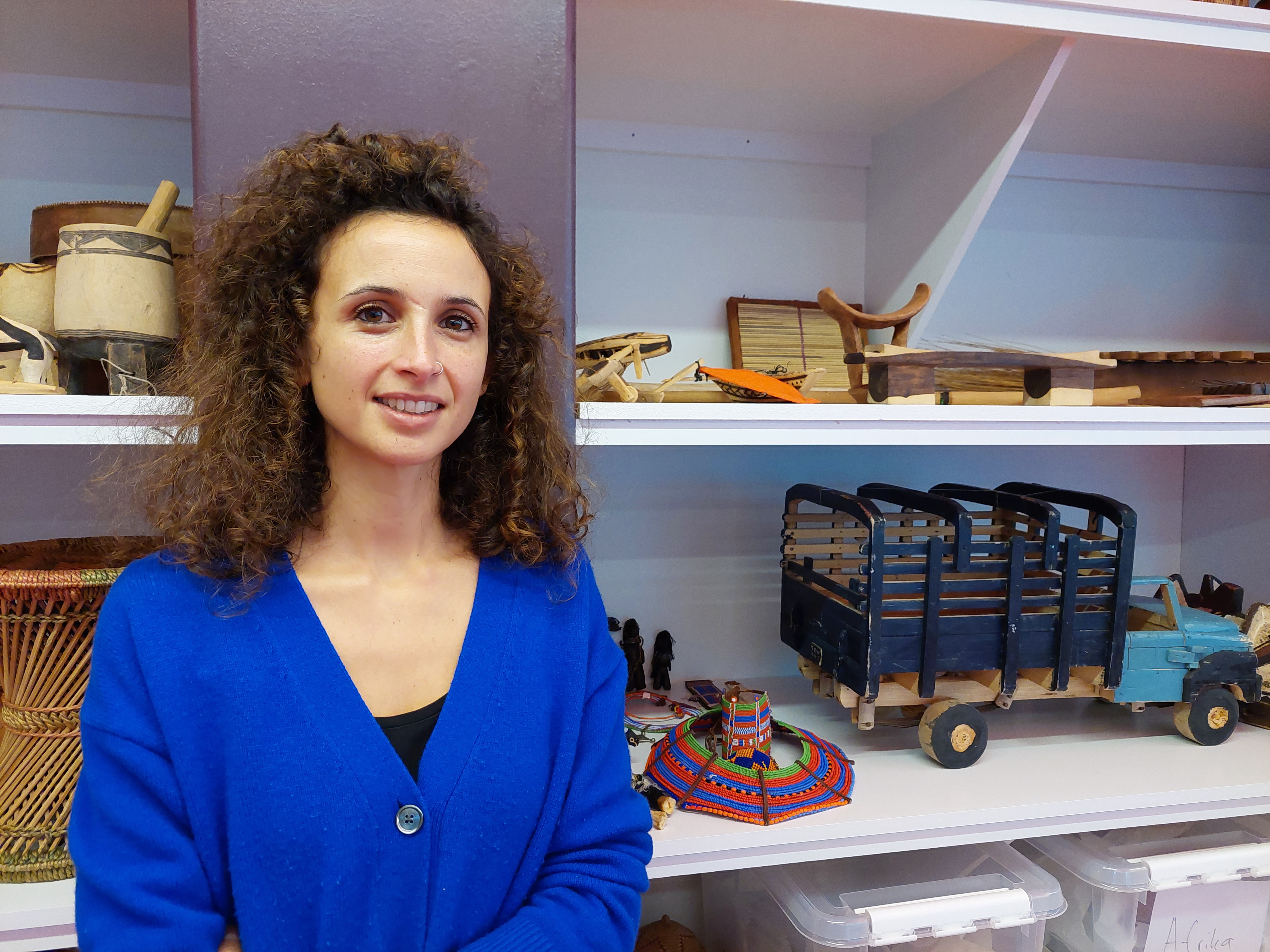
Three questions asked to our visiting researcher Carolina Valente Cardoso who spent a couple of weeks in October-November visiting the handling collection at the Museum of World Culture, Gothenburg.
Broadly speaking, I am interested in exploring the potentials of activities that involve handling, touching, sensing, and eventually even using the objects museums hold. As we all know from our museum visits, most objects are kept behind glass and can only be appreciated by sight. This is for good reason: handling them freely, would eventually hinder their conservation.
What is less known, is that it is possible, under certain circumstances, to engage with museum collections for research and other purposes. What is also often disregarded or altogether ignored, is that many museums house a special category of objects that, for various reasons, fall outside the remit of regulations associated with the formal collection, and therefore lead comparatively free and unregulated lives within (and possibly outside) these institutions. This means that they can indeed be handled, touched, sensed, and used. These ensembles of artifacts are variously referred to as the “handling collection,” the “working collection”, the “teaching/educational collection,” or, as is common in state-run museums in Sweden, the “parallel collection”. In my research I look at both of these aspects - i.e. the interaction with objects from the formal collections, and the use of handling/educational collections - with a particular focus on the latter, as it is an under-researched dimension of Ethnographic/World Culture museums.
The VKM has a sizeable and heterogenous handling collection, which is – in the present moment - being further enlarged and looked at in different ways than it was before. This means that elements of the museum staff are engaged in re-thinking these objects and how to work with them. There are no set rules yet, just different ideas, wills and, of course, constraints, that interplay with each other. This on-going process is for me, as museum anthropologist, extremely interesting to observe and be part of.
As I see it - as of now, when my research is still a work/thought-in-progress - there are two big potentials in developing the use of handling collections in Ethnographic/World Cultures museums.
The first and most important one relates to the question of how to strengthen public engagement. Regardless of where one stands in the academic debates concerning the so-called “agency of objects”, I suppose few of us would disagree that experiencing the world and the things in it, with multiple senses (rather than only sight) potentially enlarges one’s own understandings. This is all too evident for persons who are visually impaired, but it goes beyond that. Let’s just have the following thought experience: you enter a museum exhibition and - beyond reading about the objects and observing them from behind the glass - you are also invited to pick them up, have them between your hands, play with them. Wouldn’t that change substantially you experience as a visitor of the museum?
Now, I am obviously not saying that this is what should happen with all the objects in museums! That would be an utterly irresponsible position, as there are artifacts that are fragile, unique and/or sacred. But maybe it is possible to think about doing it with some of the objects, under certain conditions.
The second potential is more of an analytical/theoretical nature. The existence of museum objects that can be touched, sensed, handled by the audiences challenges basic precepts that have sedimented inside of the museum (and other instances of heritage governance). These precepts are the frames within which the museum has been thought, so to say. And they have complicated genealogies that, among others, are connected to various forms of coloniality, in that they produce and reproduce divisions and hierarchies between things that mirror divisions and hierarchies between people. Questioning these frames and categories, thus, is also part of the larger purpose of decolonizing the museum.
These two dimensions - on the one hand, engaging the audiences differently and, on the other, collapsing taken-for-granted frames and practices - can contribute to the on-going transformations of Ethnographic/World Cultures museums into more just, sustainable and inclusive spaces.
Written by Carolina Valente Cardoso
Posted by Helen Arfvidsson,
Curator of contemporary global issues
November, 2022